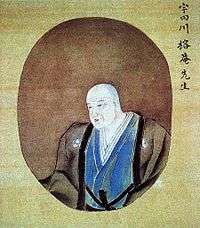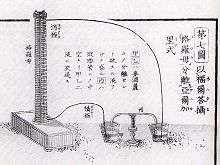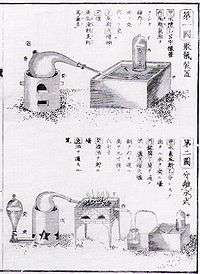Udagawa Yōan

Udagawa Yōan (宇田川 榕菴, March 9, 1798 – June 22, 1846) was a 19th-century Japanese scholar of Western studies, or "Rangaku". In 1840, he published his Introduction to Chemistry (舎密開宗 Seimi Kaisō), a compilation of scientific books in Dutch, which describes a wide range of scientific knowledge from the West. Most of the Dutch original material appears to be derived from William Henry's 1799 Elements of Experimental Chemistry. In particular, the book contains a very detailed description of the electric battery invented by Volta forty years earlier in 1800. The battery itself was constructed by Udagawa in 1831 and used in experiments, including medical ones, based on a belief that electricity could help cure illnesses.
Udagawa's Science of Chemistry also reports for the first time in details the findings and theories of Lavoisier in Japan. Accordingly, Udagawa made numerous scientific experiments and created new scientific terms, which are still in current use in modern scientific Japanese: e.g., “oxygen” (酸素 sanso), “hydrogen” (水素 suiso), “nitrogen” (窒素 chisso), “carbon” (炭素 tanso), “platinum” (白金 hakkin), “oxidation” (酸化 sanka), “reduction” (還元 kangen), “saturation” (飽和 hōwa), “dissolution” (溶解 yōkai), “analysis” (分析 bunseki), “element” (元素 genso), “cell” (細胞 saibō), and “genus” (属 zoku).
-

A description of a Volta battery in Introduction to Chemistry (Seimi Kaisō), published in 1840.
-

Chemical experiments in Introduction to Chemistry (Seimi Kaisō).
External links
- 舎密開宗 PDF files of Seimi Kaisō provided by the library of Nakamura Gakuen University (Japanese)